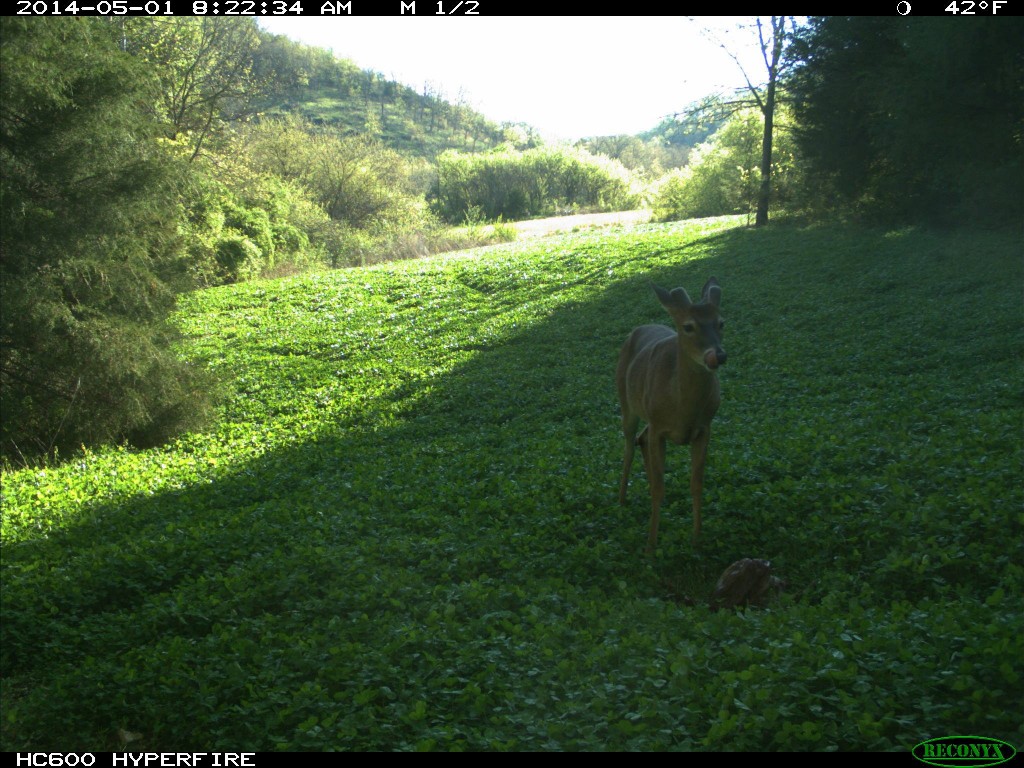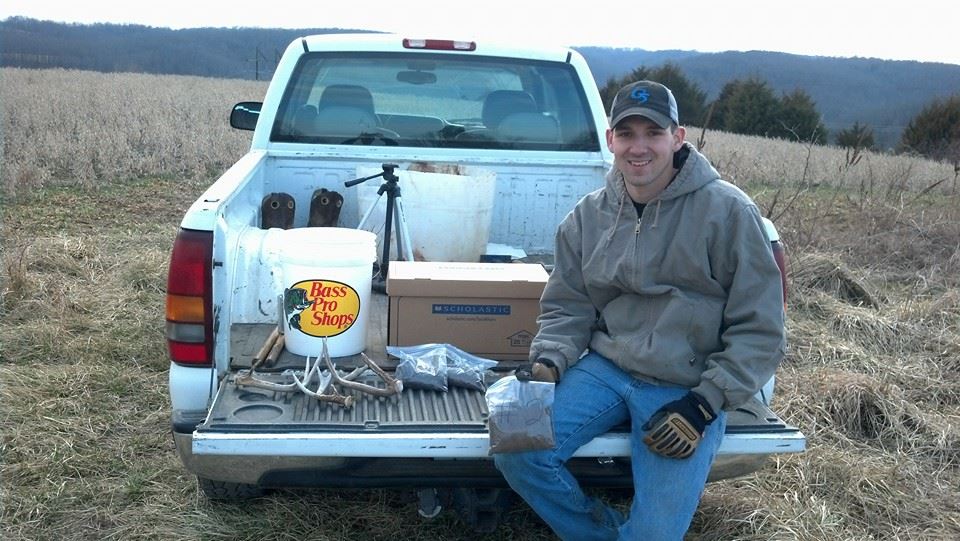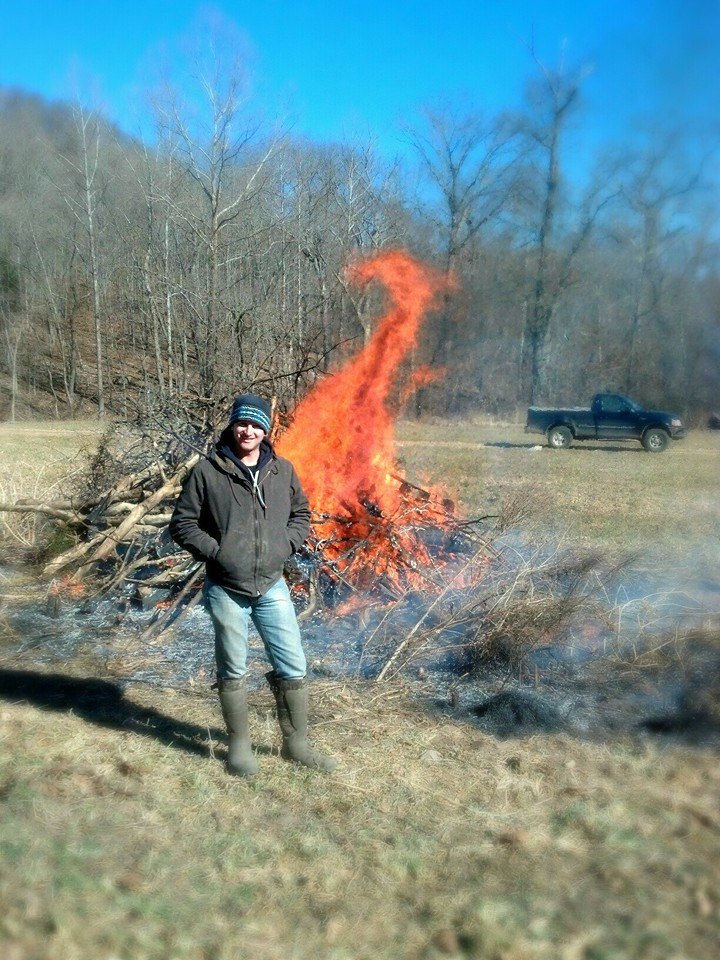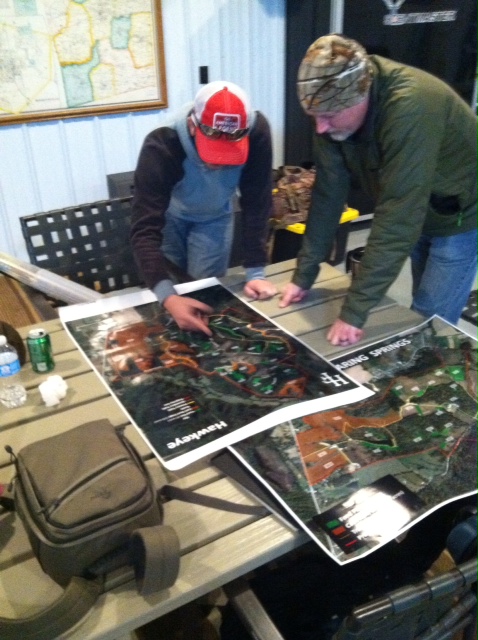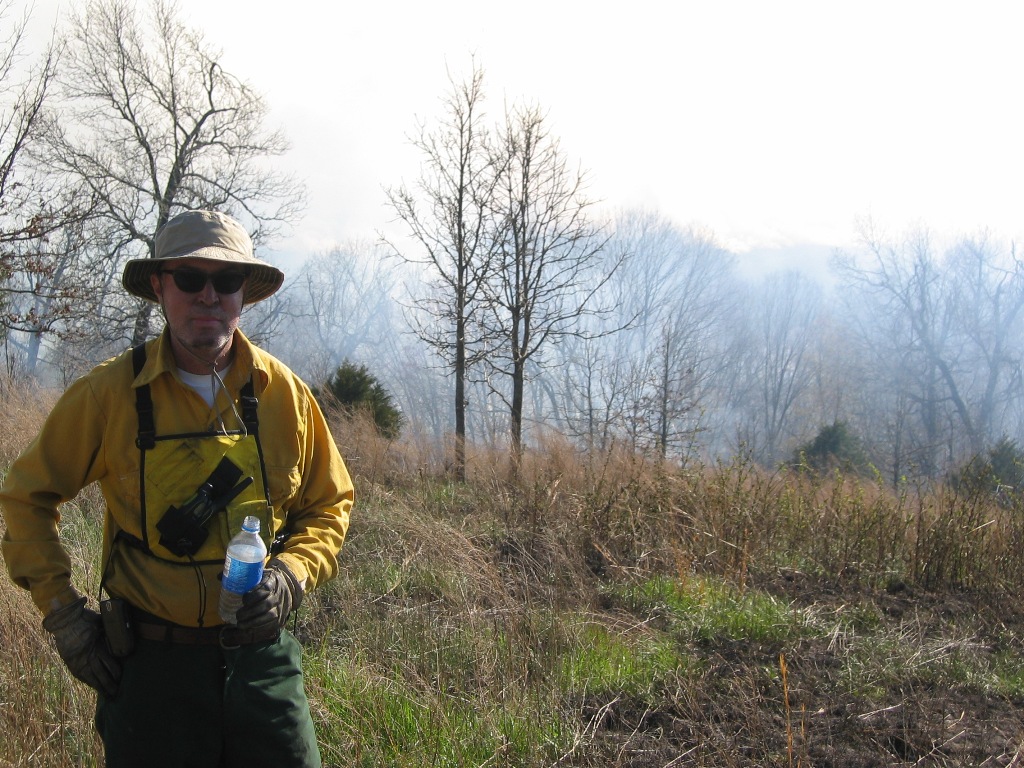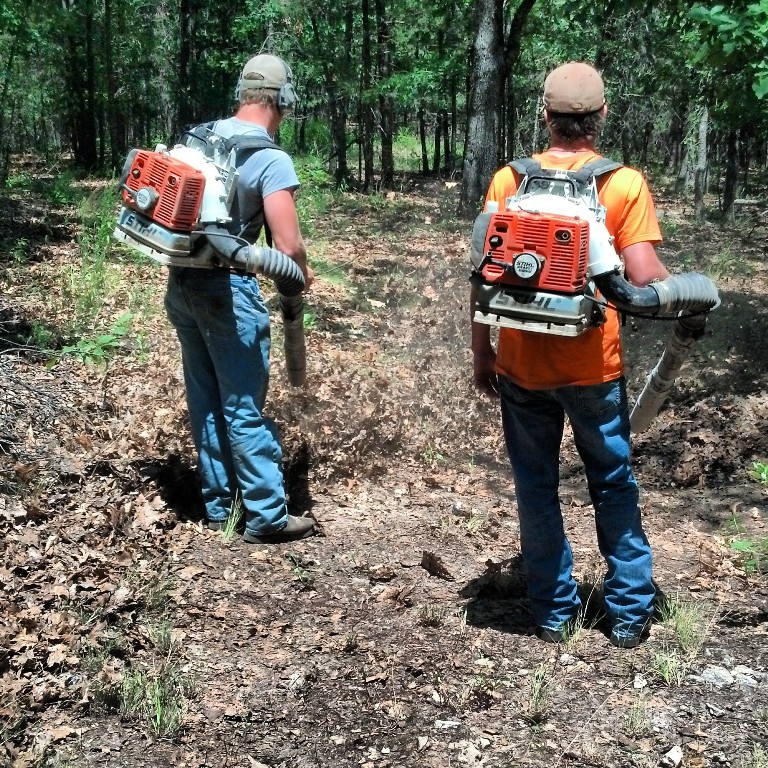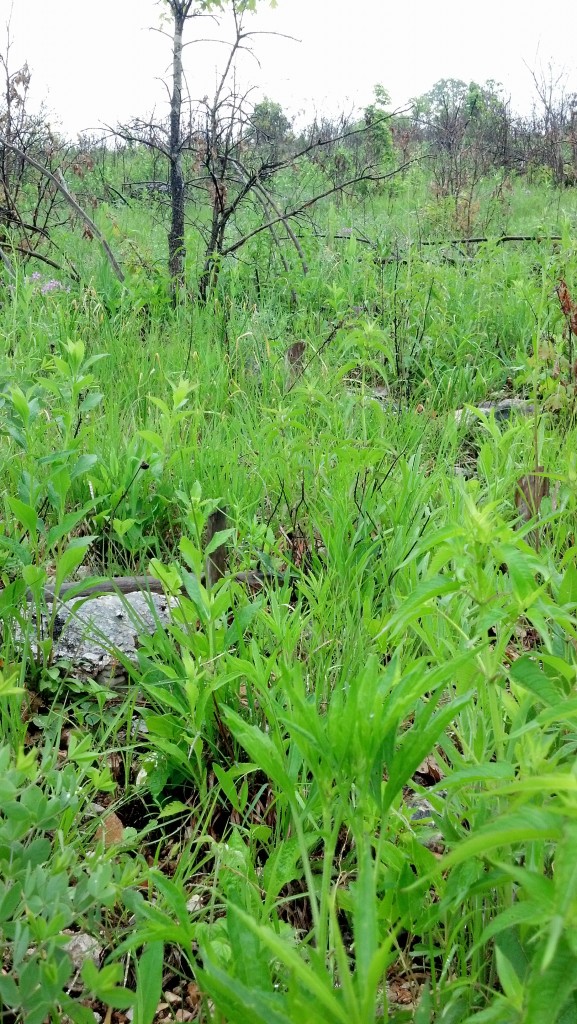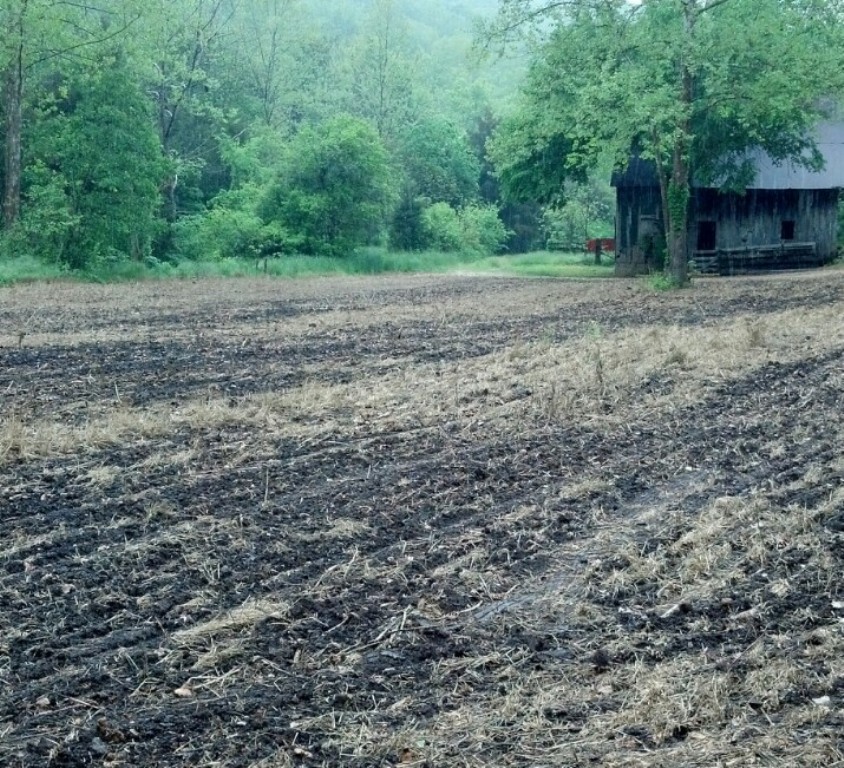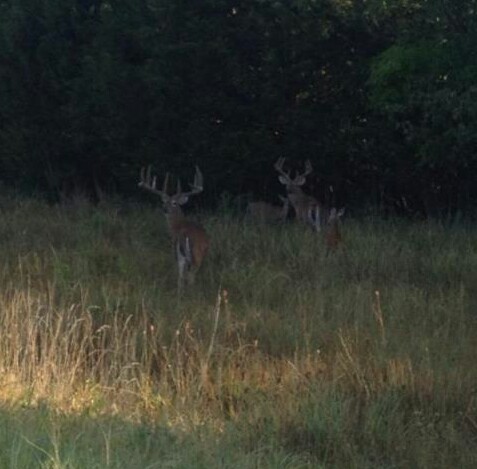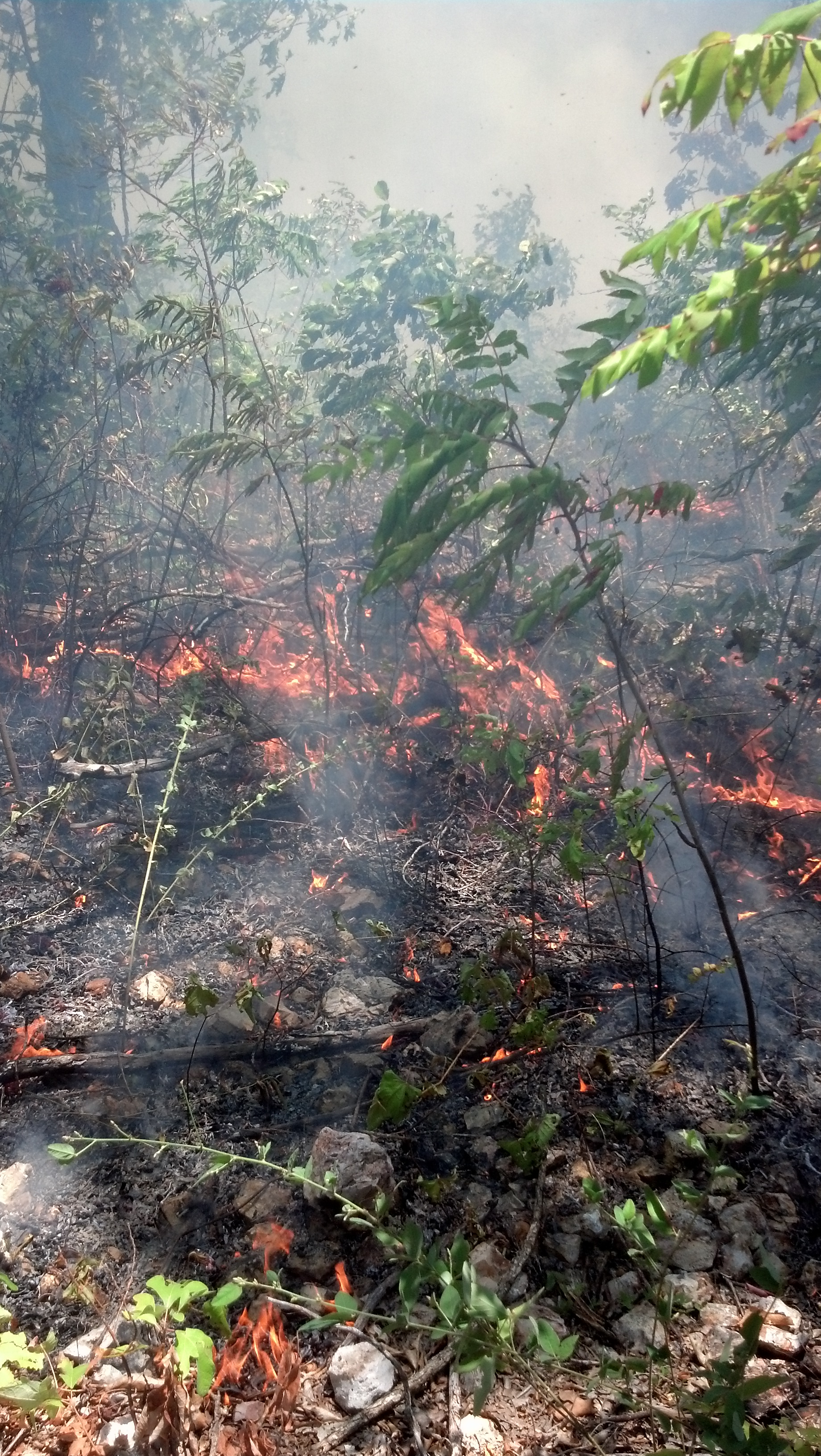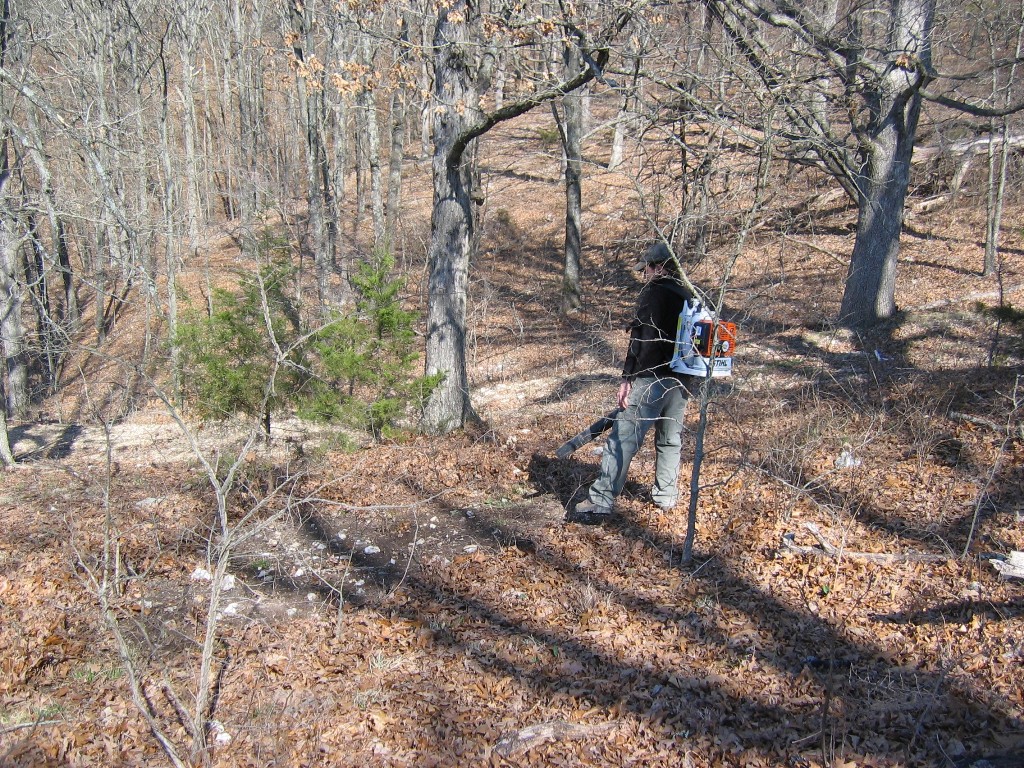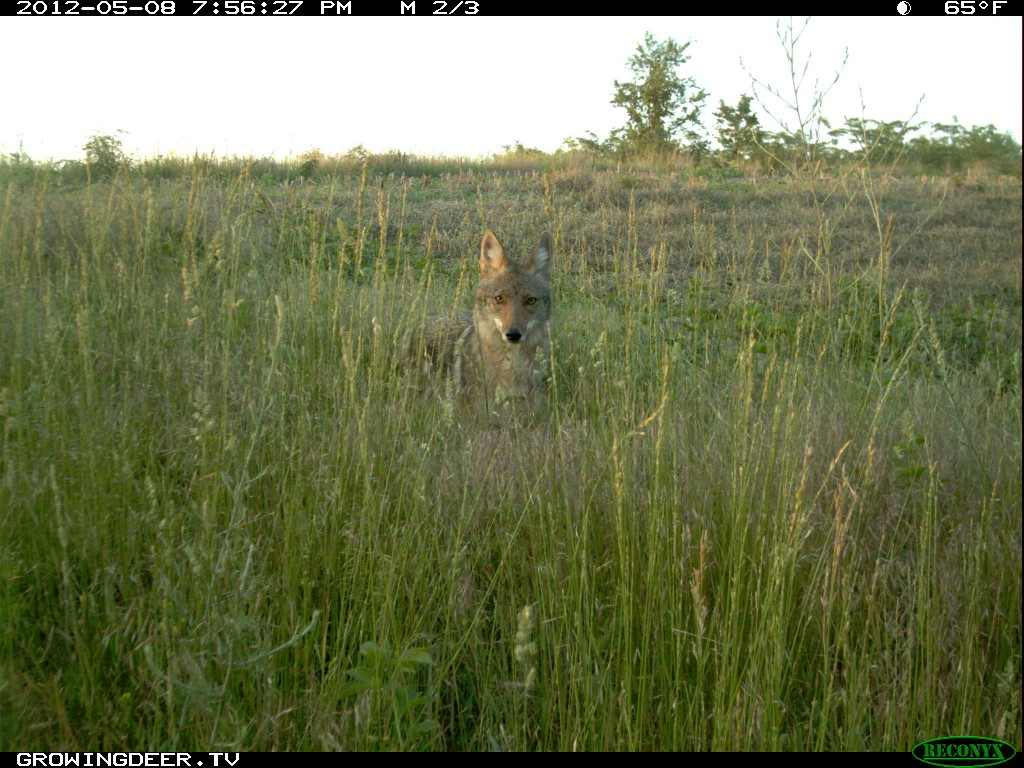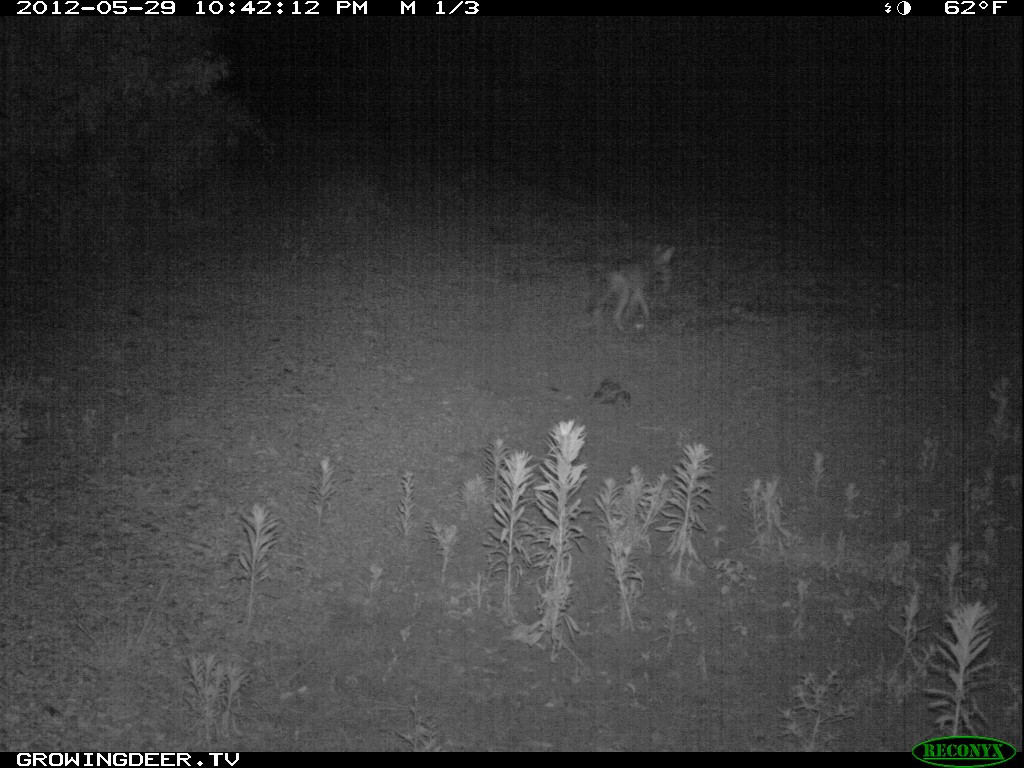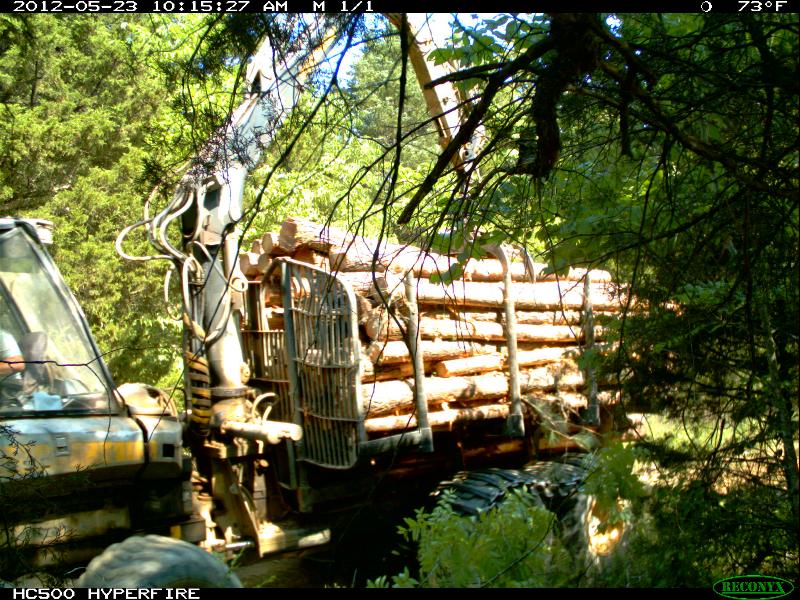Category: Whitetail Habitat Management
Trail Cameras Reveal Large Antlers Starting To Form!
It can be a depressing time of year for some people now that turkey season is wrapping up and the heat of summer is rapidly approaching! That’s not the case for the Growing Deer team as we started checking our Reconyx cameras! We are finding that bucks are already showing antler growth! Bucks have started showing up more regularly at our Reconyx stations, so tracking their growth will be exciting throughout the summer and into the fall.
One of the biggest factors in being able to following their progress is the use of Trophy Rocks. Trophy Rocks are one of the most attractive things you can use to lure deer in front of your cameras allowing you to monitor herd health, fawn survival, and antler growth. We use Trophy Rocks on The Proving Grounds year round, but a lot of people overlook the importance of having Trophy Rocks out during the spring because it isn’t hunting season. As a deer manager don’t forget that having the appropriate minerals and nutrition out year round will not only increase antler size and fawn survival but ultimately result in healthier deer.
Not only are Trophy Rocks great for improving deer health but they also make for some great Reconyx pictures! Stay with us this summer as we share the continual growth of our buck’s antlers!
To learn more about Trophy Rocks go to http://www.trophyrock.com/.
Daydreaming of whitetails,
Adam
Quality Soil For Quality Antlers
Every deer manager wants to pull those trail cameras mid-summer and see giant velvet antlers. It is important to remember that quality antlers rarely come without hard work and intense habitat management. So where does a deer manager start?
Just like building a house, big antlers start with a solid foundation. In the deer world the “solid foundation” for antler growth is the soil. This is the time of year to take soil samples. Frequently we are asked how often soil samples need to be taken. Soil is of the utmost importance when managing for whitetails, so we take soil samples every year.
Adam and I spent a day earlier this week collecting soil samples from all the food plots at The Proving Grounds. Using a soil probe, we take several samples from one food plot and mix them in a CLEAN bucket. We then put the mixed sample into a pint size zip-lock bag and clearly label which plot it came from. Be very careful not to get your samples mixed up! Once you have collected soil from all the food plots, send it off to a lab for testing. A local university lab can test the samples or they can be sent to a private lab. The Growing Deer Team uses Waters Ag in Kentucky.
With the test results we know exactly what needs to be added to the soil to produce bigger antlers. Taking soil samples is a great way to improve wildlife habitat and an even better way to enjoy a beautiful day that the Lord has made! You might even find a shed or two!
Chasing whitetails together,
Brian
Late Winter Habitat Management: Burning Brush Piles
Brian wrote about burning up our debris piles in his blog last week. We took that one step further this week. Not only did we burn up debris piles from past storms but we also burned dozer decks. These dozer decks have laid next to our food plots for a few years with the goal of drying out. Once they reached a point of being dry we could burn them and remove over 90% of the pile. That’s exactly what we did this week!
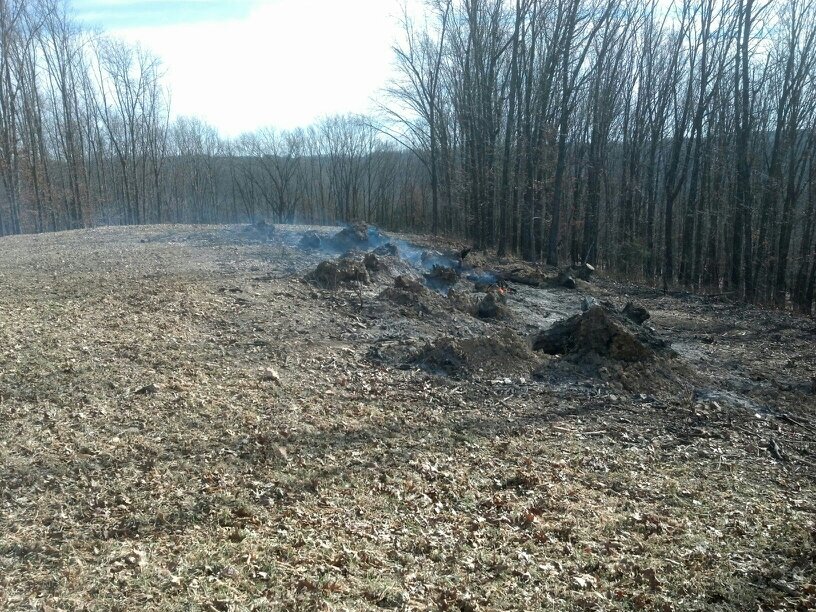
One of the dozer decks after being burned. Once the stumps are pushed away it will be ready to plant.
During these last few years the piles have only provided housing to the local groundhogs and snakes, irritation for the tractor operator when trying to plant, and the overall worst thing, obstructed views when trying to hunt.
All of these have been a nagging element when waiting for them to dry out. Finally, this winter, we decided they had dried enough to burn. We didn’t receive the average amount of rain throughout the growing season when our beans were trying to survive. After we add the groundhog variable on top of that, our beans took a hurting! After debating whether to burn or not everyone at GrowingDeer.tv came to the same answer, Burn Baby Burn!
Once they’re burned, we’re only left with root wads that will be pushed off out of the way permanently! We now have open areas that will be great for planting, which is exactly what our goal is. Now that all our work is finished removing the piles, the bare ground is a perfect site to plant clover or even expand our food plot more for Eagle Seed soybeans. We’re turning the calendar from January to February soon so we have some time to decide what we’ll plant. Be sure to follow GrowingDeer.tv to see what we decide to plant and when we do it! As always thanks for the support and good luck on all your off season management projects!
Daydreaming of long beards and long spurs together,
Adam
How And When To Plan For Next Hunting Season: It Begins Now!
January 15th is a bitter sweet day for me. Why? January 15th marks the last day of archery season here in Missouri. On one hand I’m extremely upset that the season is over. We started chasing deer in the beginning of September and now, the middle of January, is when we hang up our Prime bows for a rest. That’s where the “sweet” part comes into play. After all these months it is nice to step back and take a breather and rest, charge our batteries, and clear our heads.
After we clear our heads we then start putting in thoughts and ideas for the upcoming season. Yes, you heard me correct. It’s January 17th and we’re already thinking about next deer season! Great management plans aren’t drawn up and executed in a matter of a few months – that’s why we’re starting now. Obviously we’ve been doing management projects throughout the season but we’ve postponed the projects that will add more disturbance to the property. Now with this season complete it’s time to start back up!
Like most years we start by looking at our map. Where are our stands located? Where is the food located? Where are the bedding, bottlenecks, and water sources located? Finally, how can we hunt the property more successfully? One of our biggest projects for this year is dealing with the southern part of The Proving Grounds. This part hasn’t been as highly managed and has very few food sources and stand locations. Our plan is to provide both of those and bring it all to you in coming months, stay tuned to GrowingDeer.tv!
Other goals we are looking forward to completing are clover maintenance and additions, invasive species control, and prescribed fire.
First we’ll talk clover. We manage about 10% of our food plots in clover. Every year we’ll watch it progress or decline and study which areas need to be replanted and which plots are being used heavily and could possibly be hunted more regularly.
Invasive species control can bore most people, including myself, but it’s part of good management. Over the last couple of years we’ve tackled a huge infestation of honey locust trees but I’m happy to say we’ve knocked about 90% of the population out and we’re now searching the hillsides for any squatters that may still be surviving. This next year we’ll be shifting our focus to multi-floral rose bushes. They’ve begun to spread into the food plot edges so it’s important for us to eliminate the problem before they start to gain ground and compete with the food sources we’ve planted.
Lastly, one of our biggest and most time consuming projects, prescribed fires. We spend a lot of time working for fire, it all starts by making the fire line to finishing it with the lighting of the fire. This is a huge project but when it’s all said and done the benefits are huge! Be sure to check out our progress throughout the off season!
But – we’re not completely locked up inside! Cabin fever is real ya know! We’re going to be doing a little predator hunting to see if we can’t have a little fun and deal with the depression of deer season closing.
Daydreaming of whitetails,
Adam
Why Prescribed Fire Is Good And Necessary For Wildlife
Nineteen members of the Granite Mountain Hotshot crew were killed while fighting fire this week. I am very saddened by this loss –having been a wildlife firefighter for the Bureau of Land Management while I was in college. Like all tragedies, I can’t understand the full magnitude of this event because I didn’t know any of these folks personally.
Such events make some folks question the practice of prescribed fire. These events should serve to encourage the use of prescribed fire. Fire can be dangerous. However, the lack of fire can cause much greater danger.
The Smokey the Bear campaign started after years of devastating wildfires. Those wildfires did tremendous damage and resulted in the loss of human lives and much habitat. The call to control wildfire was necessary and needed! However, the call to stop all fire and the message that all fire is bad was wrong. That campaign and the mindset it created that all woodland/grassland fires are bad have probably resulted in as much damage as the wildfires that started the Smokey the Bear program!
Researchers have studied fire scars on very old living and dead trees. The pattern is clear that most areas, especially those that were timbered (and not swamps) and grasslands were impacted by fire every three to ten years on average. The average is wide due to the average humidity, etc., at each specific area. These fires were started by lightning strikes, Native Americans, etc. It seems most of these fires were of low intensity. They may have covered 100’s of square miles, but the flame height, etc., were not like the major fires we see on TV now.
The reason the historic fires were lower in intensity was because the frequency of fire during pre-settlement days reduced the fuel loads and limited the fire’s intensity. Fires tended to burn hotter on south and west facing slopes and barely creep along on north and eastern facing slopes where the soil moisture and humidity levels were higher.
In general, since the Smokey the Bear campaign many folks have been against using prescribed fire to reduce fuel loads and improve habitat. This has proven to be a costly mistake. Fire is as natural a part of the environment as trees or grass. In fact, many native vegetation species are dependent on fire to reproduce. Others species prosper when fire occurs.
Fire results in new growth (early succession plant communities) that is extremely beneficial to many species of wildlife. Fire can reduce species of harmful insects like ticks, etc. Fire is a tool – like a dozer, herbicides, etc. Like other tools fire can be used to benefit or harm environments and people. Imagine if there had been a good prescribed fire program that had reduced the fuels in the area where those 19 hotshot crew members were killed this week. Lighting would have most likely still started a fire. But with reduced fuel loads, the fire wouldn’t have been as aggressive and intense. No one can say for certain, but those 19 firefighters might still be alive.
It’s time we changed the Smokey the Bear campaign and educated folks that aggressive, out of control fire is bad. But low intensity, prescribed fires are not only natural, but a great habitat management tool – as well as a safe and efficient way to reduce fuel loads so catastrophic fires don’t occur.
As a wildlife biologist, I use prescribed fire annually to improve and/or maintain habitat. As a forest and grassland land owner, I use prescribed fire to reduce fuel loads and ticks on my property to protect my family (Watch GDTV #89).
Researchers have clearly shown frequent, low intensity fires were common throughout the whitetail’s range. Totally excluding fire has proven to have deadly results for man and harmful results for many habitat types. Most states offer prescribed fire courses. Get educated and support well planned prescribed fire for better habitat and a safer environment.
Growing Deer together,
Grant
Warning: This blog contains information about prescribed fire which is a management tool for trained professionals using the appropriate tools for the situation.
Predicting Antler Growth With A Rain Gauge
Remember the saying “April showers bring May flowers?” Early spring showers bring more than flowers. Early spring showers bring antlers!
There is some neat research in south Texas that monitored the amount of rainfall during the early spring months and the average size of antlers produced by each age class of bucks that fall.
The results clearly demonstrated a positive relationship between spring rainfall and antler growth. The smallest average antler size per age class occurred during the two years that the least amount of rain occurred during the early spring months. The years the average antler size per age class was the largest was when the most rain occurred during the early spring months!
Clearly, ample high quality forage during the first portion of the antler growth cycle is strongly related to antler production during that year! This certainly applies to the Texas example where the majority of the land is covered by native vegetation.
I read a report the other day that only 7% of the corn and soybean crops have been planted due to the fields being too wet. The percent of these crops that are planted is way behind the previous two years. In the corn and soybean belt deer are literally forced to consume these cultivated crops as native vegetation is very rare. It’s the only thing on the menu! A wet spring in the corn belt may have the opposite effect on antler size compared to areas where native vegetation can take advantage of the spring rains.
Deer with the largest antlers and body weights are from areas with ample soybean and corn production. However, if the area where those crops are grown remains bare ground during the early spring, there’s not much for the local deer to eat. In these areas spring showers may have the opposite relationship on average antler size per age class compared to an area with quality native vegetation. 2013 is shaping up to be an interesting year for deer hunters and researchers!
Growing Deer (and learning about them) together,
Grant
Preseason Preparations with a Giant Whitetail
It’s August the 23rd. I’m starting to have that feeling that can only be compared to the night before Christmas when I was a child. There wasn’t much sleep happening because the excitement was almost too much to bear. Plus, what little rest I did get was filled with dreams completely engulfed with new toys, stockings and reindeer. Years later I’m still dreaming about deer, but this time it is whitetails! Lately I’ve become so entangled with the upcoming season opener (September 15th) that I can’t even go to sleep without thinking about it. The good news is, I’m not alone. In fact, just this week Grant shared with me that he has started his usual preseason dreams about hunting whitetails. This is something that is often true with deer hunters.
To make this problem worse, last week I received a photo from a close friend of mine with a GIANT buck he had seen standing alongside the road in Missouri. At first glance, you’ll probably do the same thing I did and assume it is a fake or in a pen. After some questioning, I finally came to believe his story. Check it out!
Did you notice the second buck standing behind that monster? At first I overlooked him. That buck isn’t too shabby either. He was just dwarfed because he was standing next to a GIANT! Out of respect for the landowners and hunters in that area I won’t give any specifics. This definitely gets me pumped for deer season.
Even with all this talk of deer season we’re still continuing to manage the wildlife habitat here at The Proving Grounds. This week we had a little fun with a woodland/glade prescribed fire. With a “summer burn” or “late growing season burn” we are helping the wildlife by stimulating the future growth of forbs and killing the many small saplings that have tried to take over the glade. Our goal was to kill as many small saplings as possible while not killing any large, mature trees in the process. We safely accomplished our goal and now are planning our next fire for (hopefully) sometime next week.
It’s that time of year! Whether you’re out scouting fields for bucks or practicing prescribed fire keep your eyes peeled and a camera handy. If you see a buck like my friend, you don’t want to miss an opportunity for a photo! If you do capture a cool photo, and want to share it, head over to Facebook and post it! We would love to have our Facebook page covered with photos taken of giant whitetails so we all could dream together! With a little luck maybe those dreams could become reality for all of us!
Dreaming of Giant Whitetails together,
Adam
Warning: This blog contains information about prescribed fire which is a management tool for trained professionals using the appropriate tools for the situation.
Dry Weather Whitetail Habitat Management Plans
It’s June 8th and as I look out the office window across The Proving Grounds it looks like mid-July….DRY! Almost all signs of our last rainfall are gone. The plants are definitely showing it. If this trend keeps up it could be a very stressful summer for our food plots and wildlife. I’ve already been hearing about wildfires across most of the Midwest due to the lack of measurable rain.
With all these negative thoughts for our wildlife there is one positive that comes to mind. The dryer weather could make for some great fall or late growing season prescribed fires. These fires can also be a great tool to help stimulate forbs and other vegetation that are great for wildlife. Plus, it can ultimately help remove some of those annoying ticks (check out GDTV 124), NOW THAT IS GOOD NEWS!
It is very important to be prepared for a prescribed fire by developing a burn plan and getting the fire lines in place. Here at The Proving Grounds we will be cranking up the back pack blowers and chainsaws soon to make our fire lines. Ideally our fire lines are 4 to 5 yards wide with all leaves, sticks, and any other material that’s easily flammable removed to bare soil – or rocks in our case. This line or break completely surrounds the fire area to prevent the fire from getting into an area you didn’t plan on burning — which could lead to your having a dangerous problem on your hands.
If you plan on doing a fall or late season prescribed fire on your proving grounds it is time to start preparing.
Adam
Warning: This blog contains information about prescribed fire which is a management tool for trained professionals using the appropriate tools for the situation.
Hunting Season Now?
It’s June 1st and prime fishing time for many outdoorsmen. Others are busy planting and maintaining food plots and other habitat management activities. However, it’s wide open hunting season for some.
Throughout most of the whitetail’s range fawns have just been born or will be born shortly. Fawns are very vulnerable this time of year during the peak of predation. The research is clear that coyotes and other predators can take a huge toll on fawns and cause substantial stress to adult deer.
Rather than sit by and wish it wasn’t so, why not go predator hunting! This is a great time of year to remove or spook predators from the area where you hunt deer and turkey! The mornings are fairly cool this time of year and many predators are active during the first few hours of daylight.
Predator hunting is a great way to refine your hunting skills! I typically use my deer hunting gear (camo, Nikon scope, Winchester Ballistic Silvertip ammo, etc.). Besides having a good chance of seeing some bachelor groups of bucks, removing predators from your hunting spots may allow the resident bucks to be a bit calmer this fall. When deer are constantly harassed by four-legged predators, they are probably much more alert to two-legged predators as well!
Watching, smelling, or hearing where a coyote killed a prey species is likely very alarming to mature bucks. I see coyote calling this time of year as a win win. This action removes stress from the local deer herd and keeps me and my gear tuned up for deer season!
Do you and your deer herd a favor and grab a FoxPro caller and spend some time being a predator of predators! It’s a win win hunt!
Growing Deer together,
Grant
Big Bucks for Big Bucks
I’m returning from the Kentucky Proving Grounds as I write this. The Kentucky Proving Grounds is a tract of land owned by my friend, Mr. Hamby. His mission is to produce and hunt quality white-tailed deer and turkey and share those experiences with family and friends.
This week we started another project toward meeting Mr. Hamby’s mission. There are about 140 acres of loblolly pines in seven different stands that were planted 18 years ago at The Kentucky Proving Grounds. If pine trees are planted at a normal density (about 750 trees per acre), they will become so crowded that each tree will grow slower, be weakened and susceptible to disease and or insects.
Most critters or plants that are crowded don’t prosper for the same reasons. For example, deer herds that are overcrowded don’t express their full potential and are more susceptible to disease and/or insects.
When deer herds are overcrowded and damaging their habitat the best solution is to harvest excess reproductive units (does). The goal is to harvest some of the population to allow the rest to be healthier and not damage the habitat.
It’s the same with pine trees. By harvesting the excess trees, the remaining trees will grow faster and be less susceptible to most disease and insect threats. However a big difference is that the landowner can generate revenue by thinning trees! So when appropriate, thinning trees is a great way to improve the habitat, maybe clear food plot location, and make some revenue.
At The Kentucky Proving Grounds, Mr. Hamby has had me designate the flat and accessible locations to be clearcut (remove all trees) and establish new food plots. In the other portions of the pine stands, I instructed the loggers to remove the trees with less than desirable form, smaller diameter, etc., and insure that each residual tree has space around it’s crown so it can receive ample sunlight, moisture, and nutrients from the soil.
Good timber management is usually good deer management.
Growing Deer together,
Grant



